Charles E W Bean, Diaries, AWM38 3DRL 606/49/1 - July 1916 - Part 1
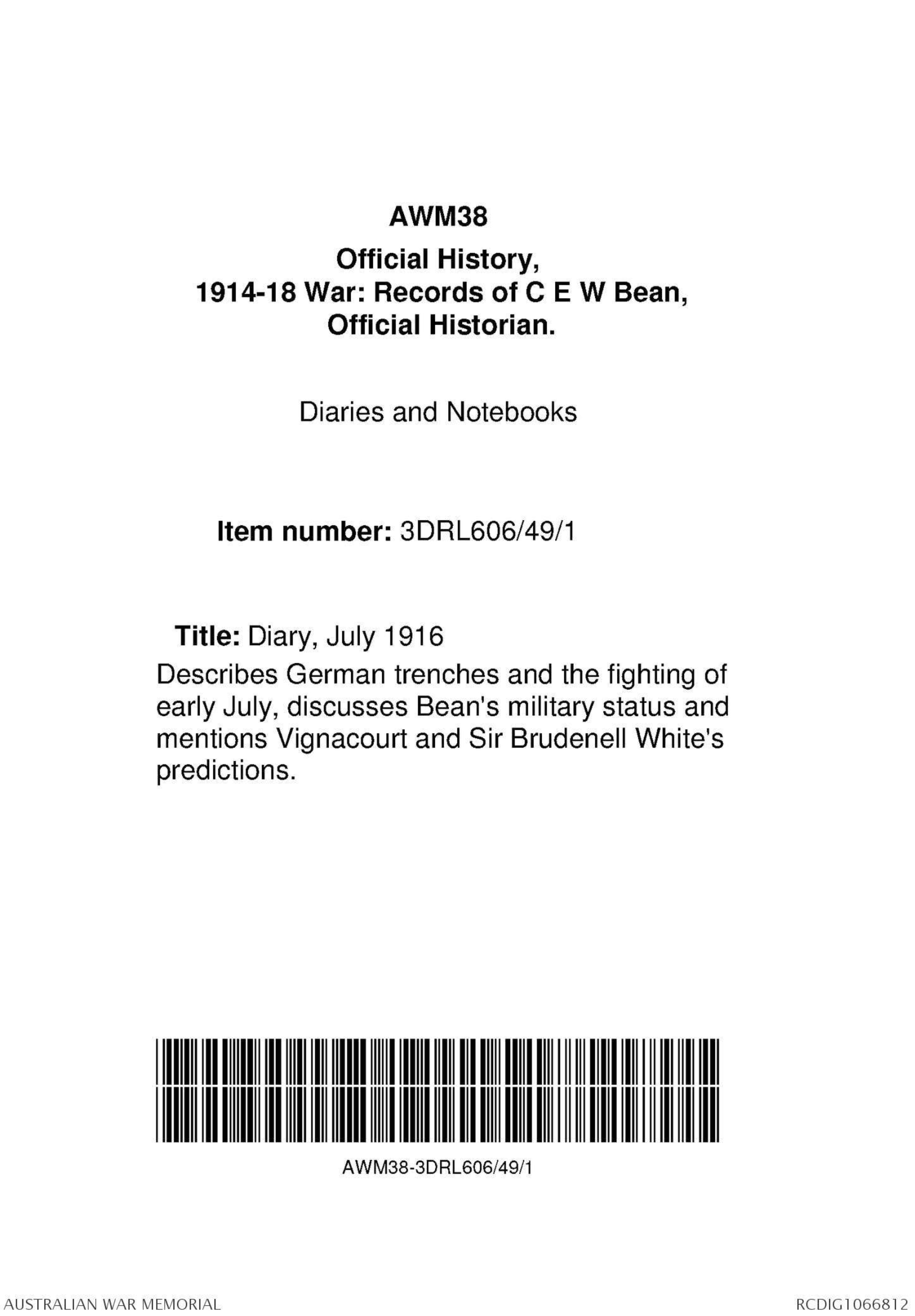
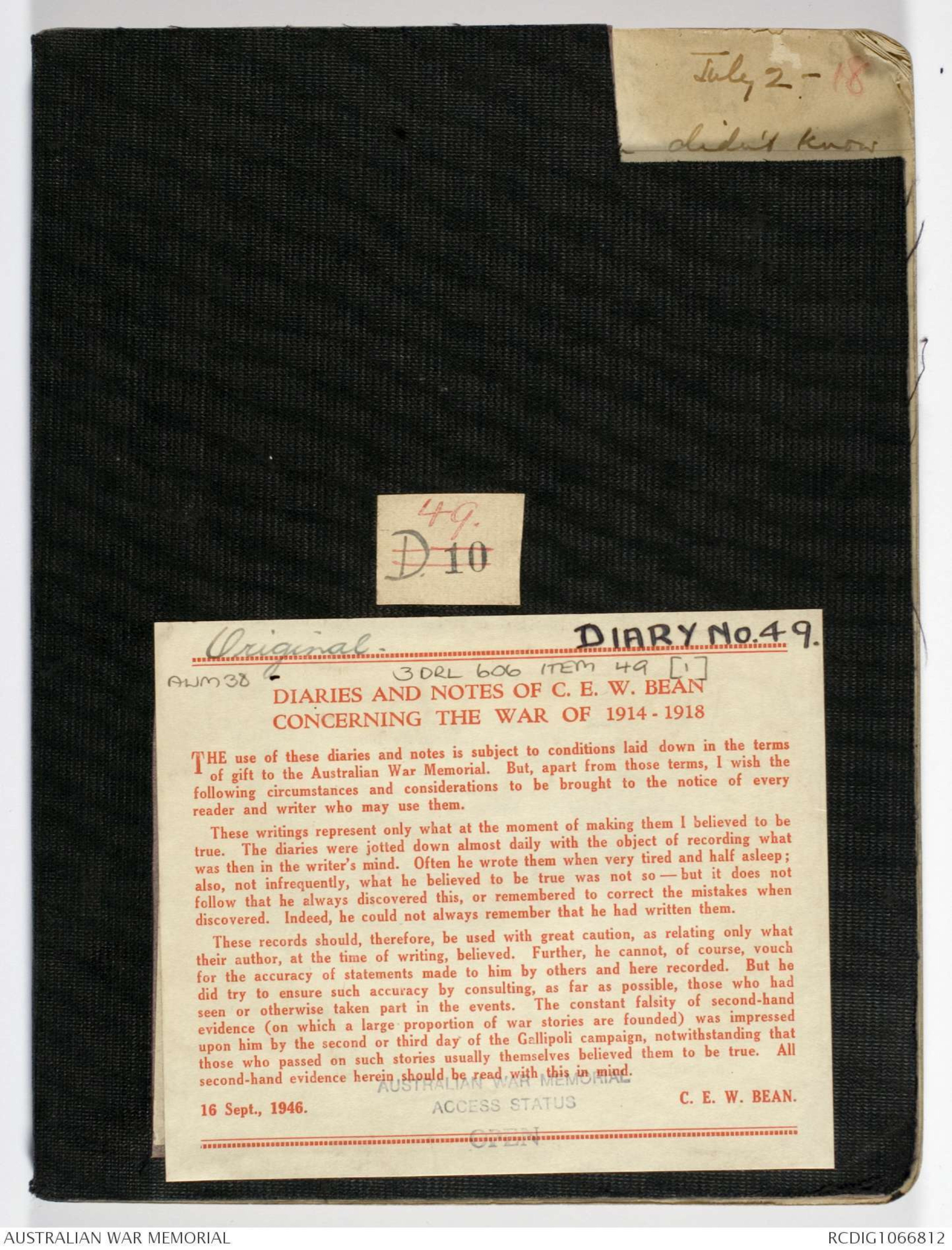
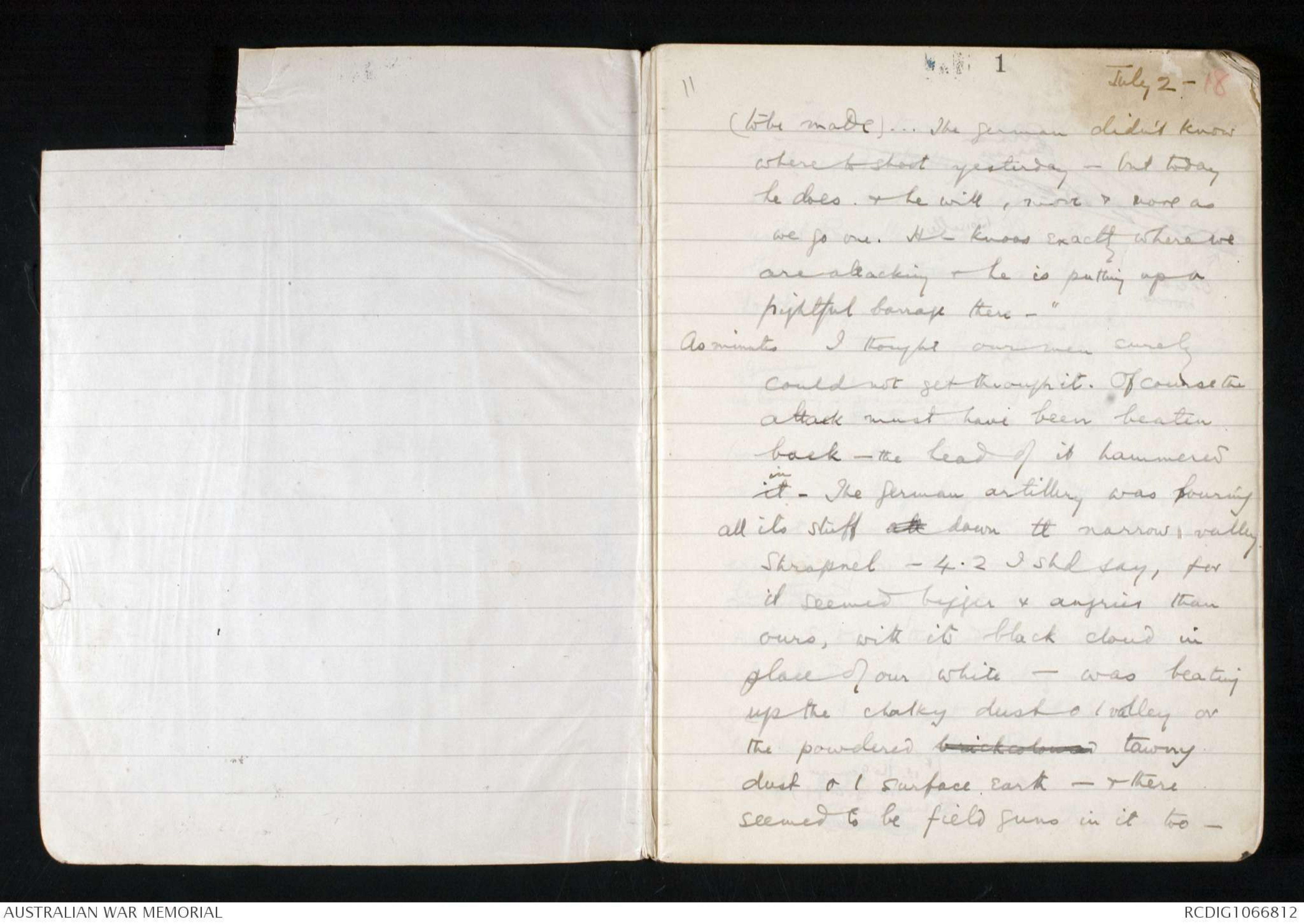
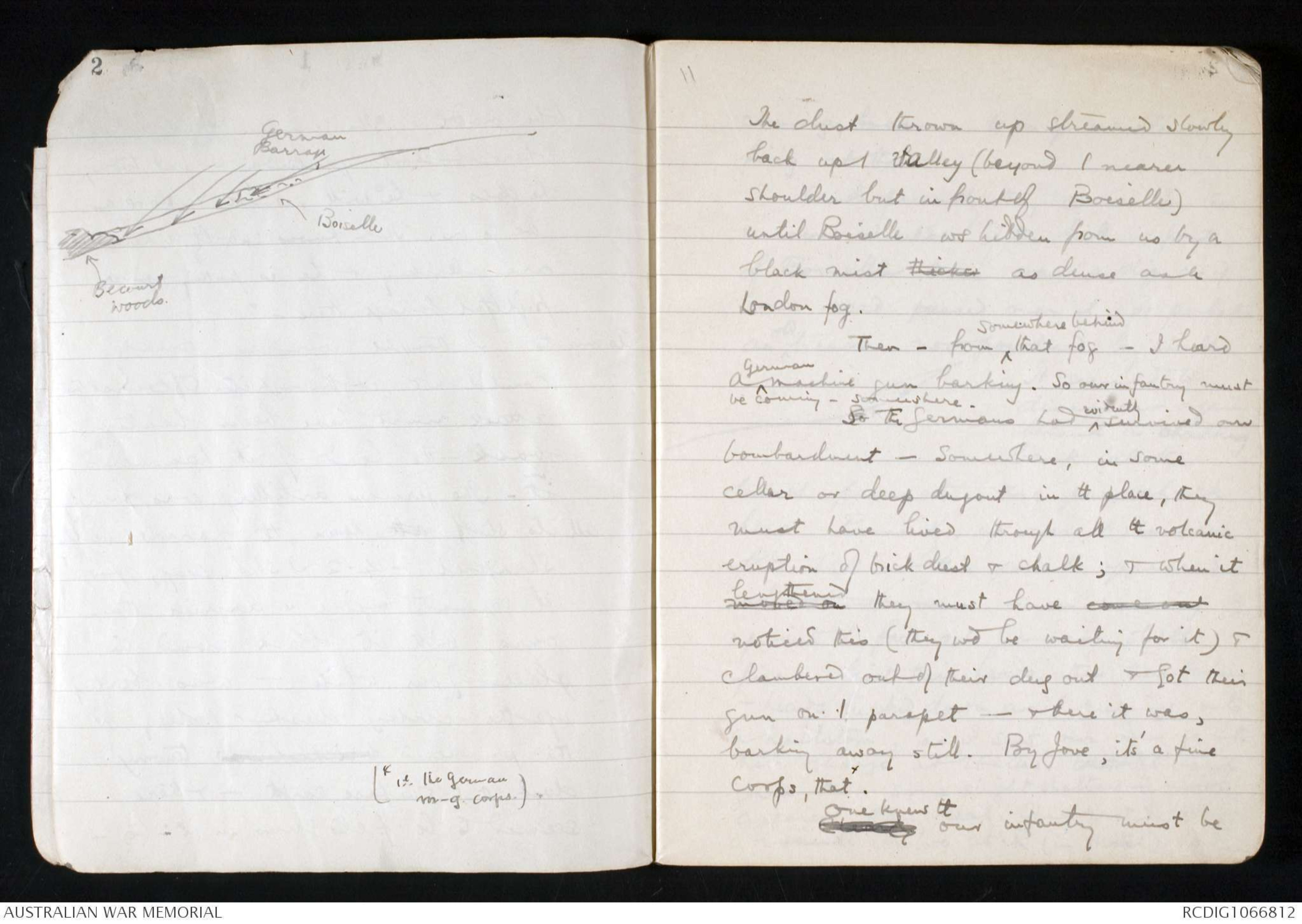
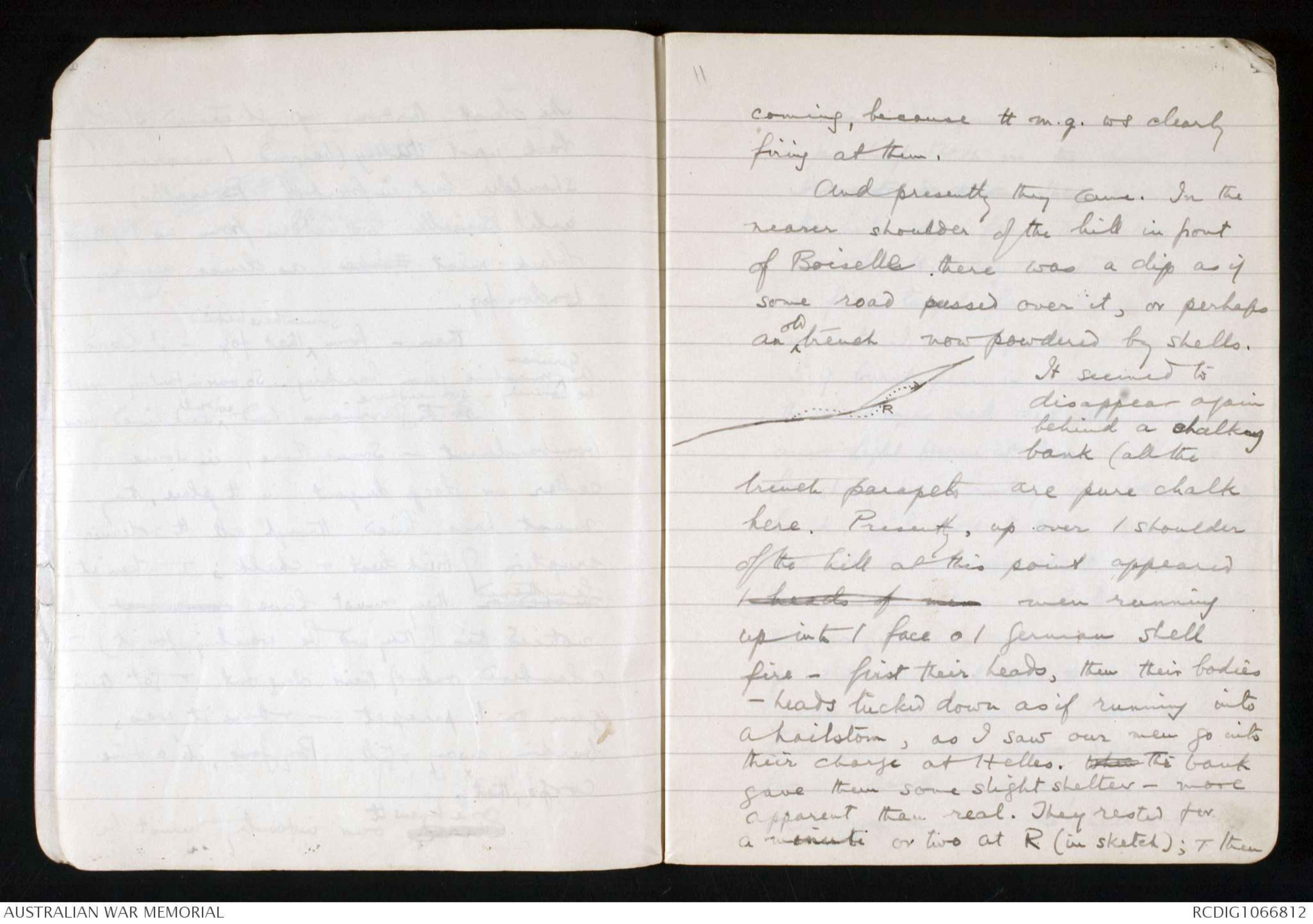
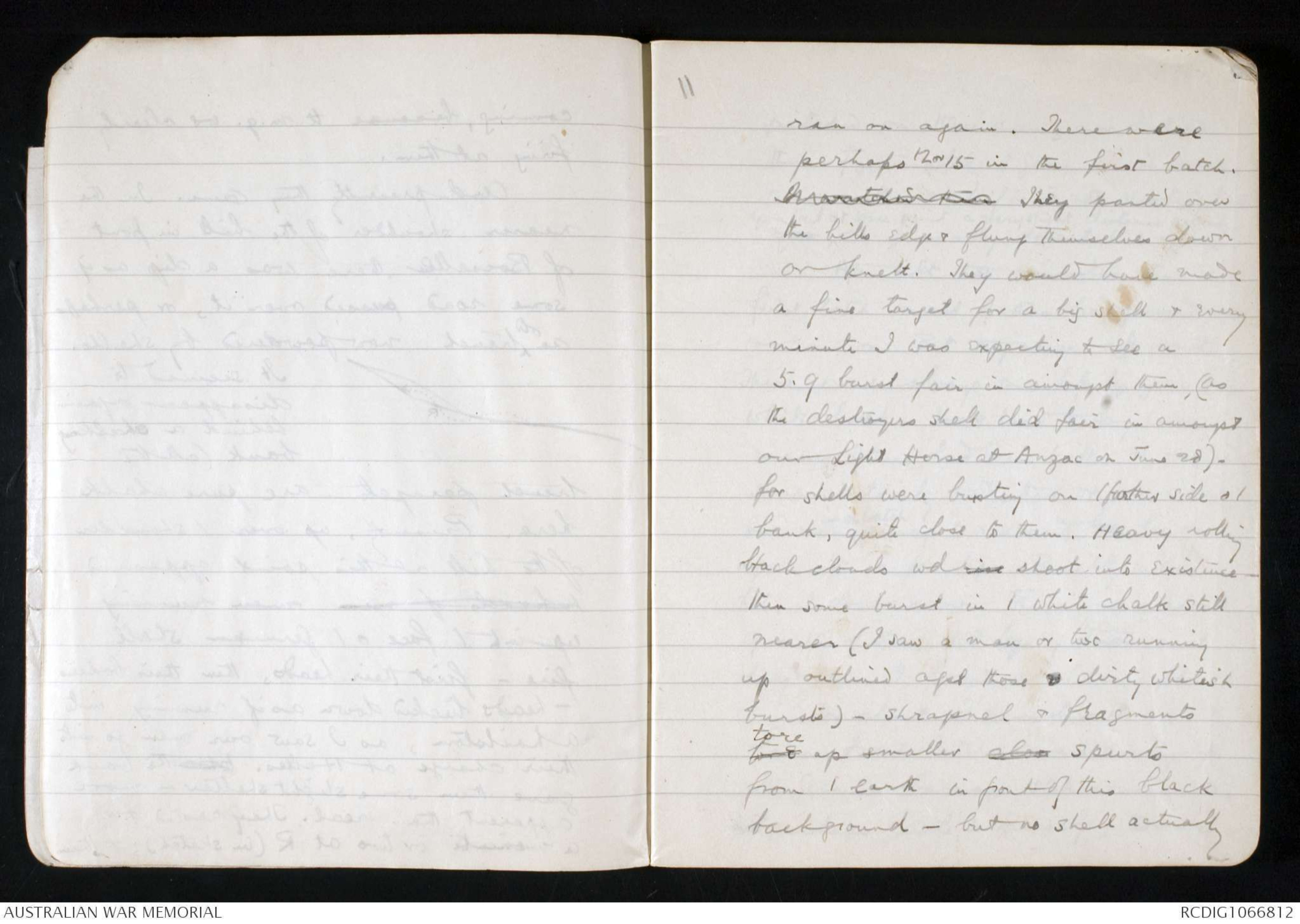
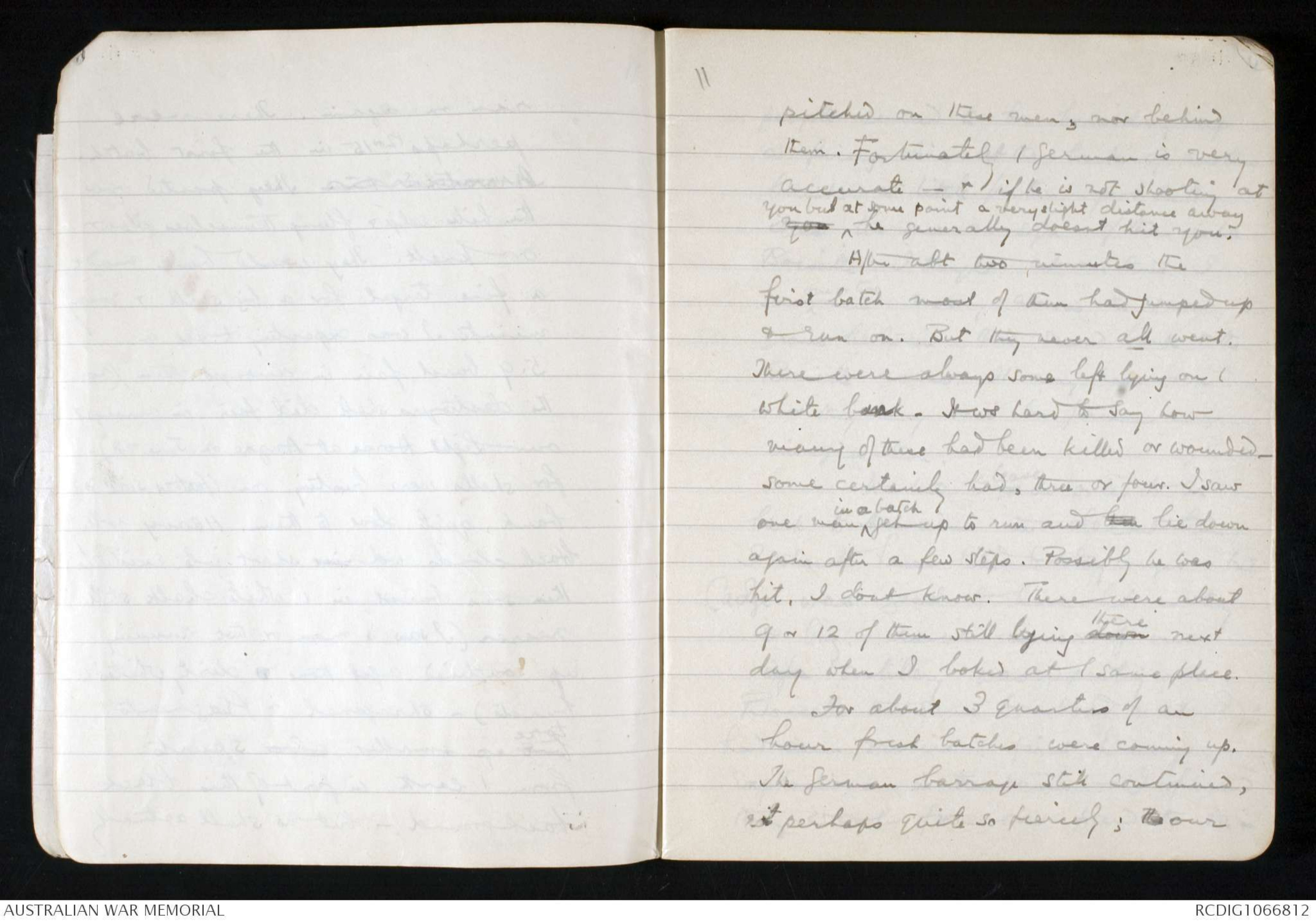
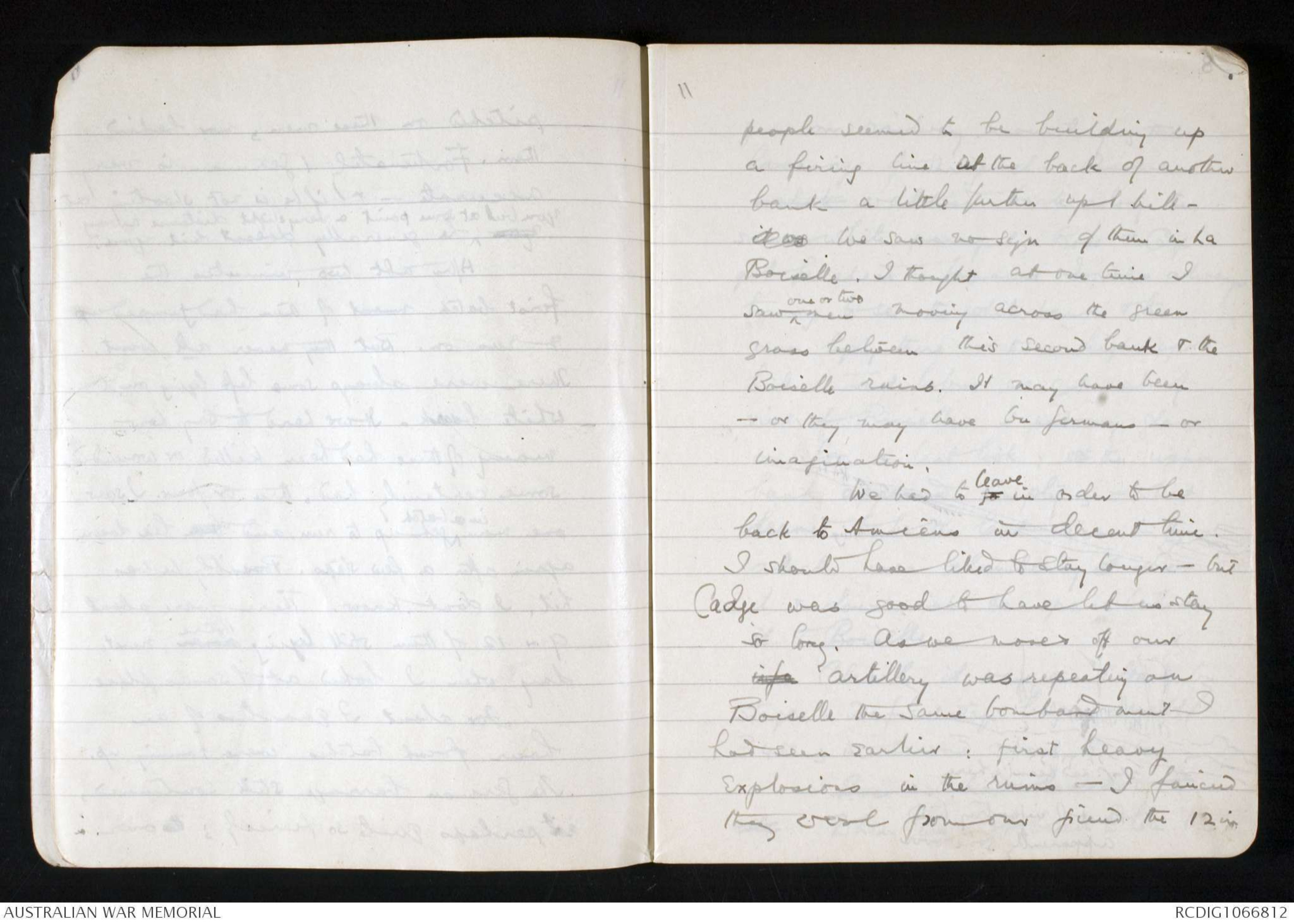
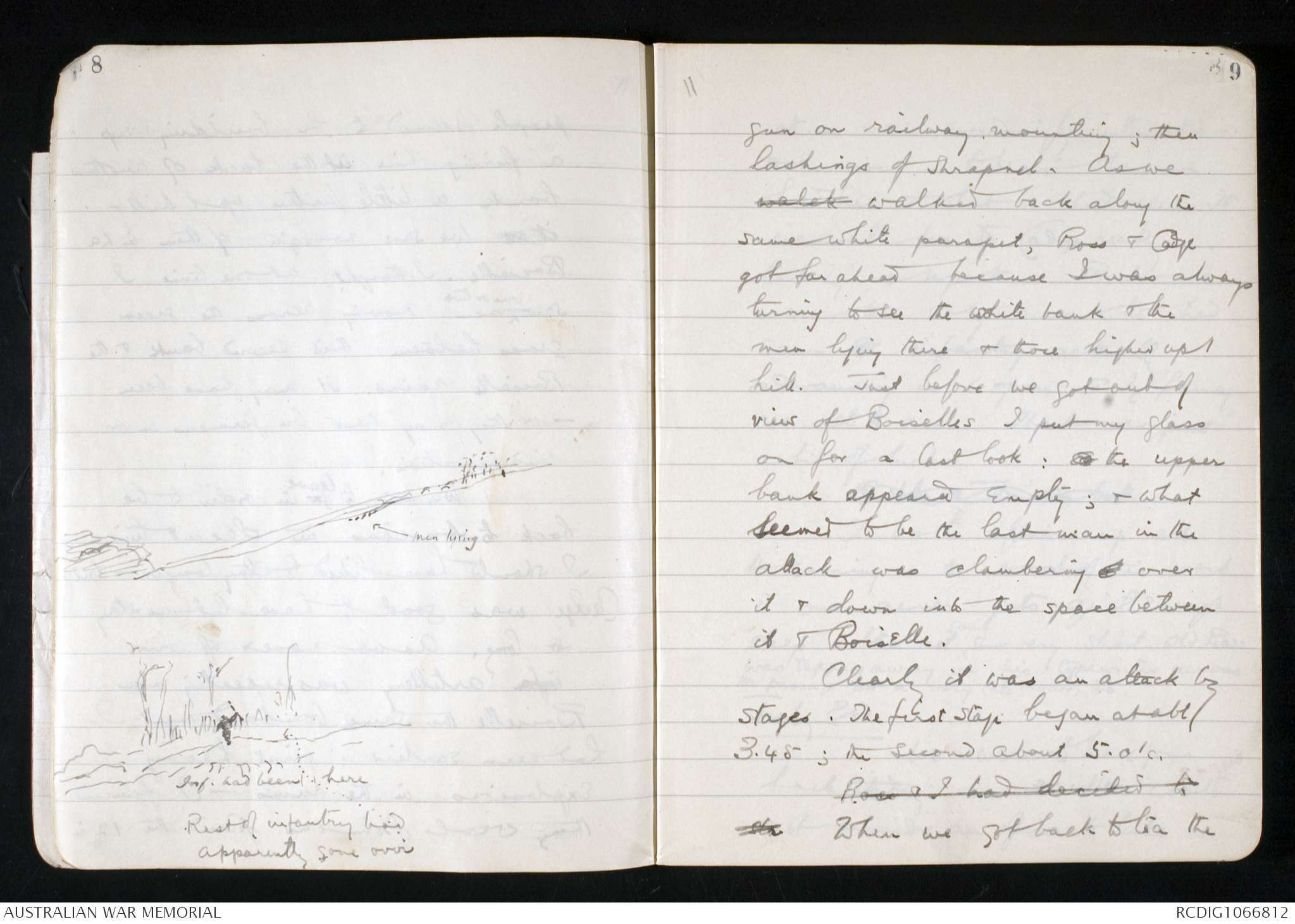
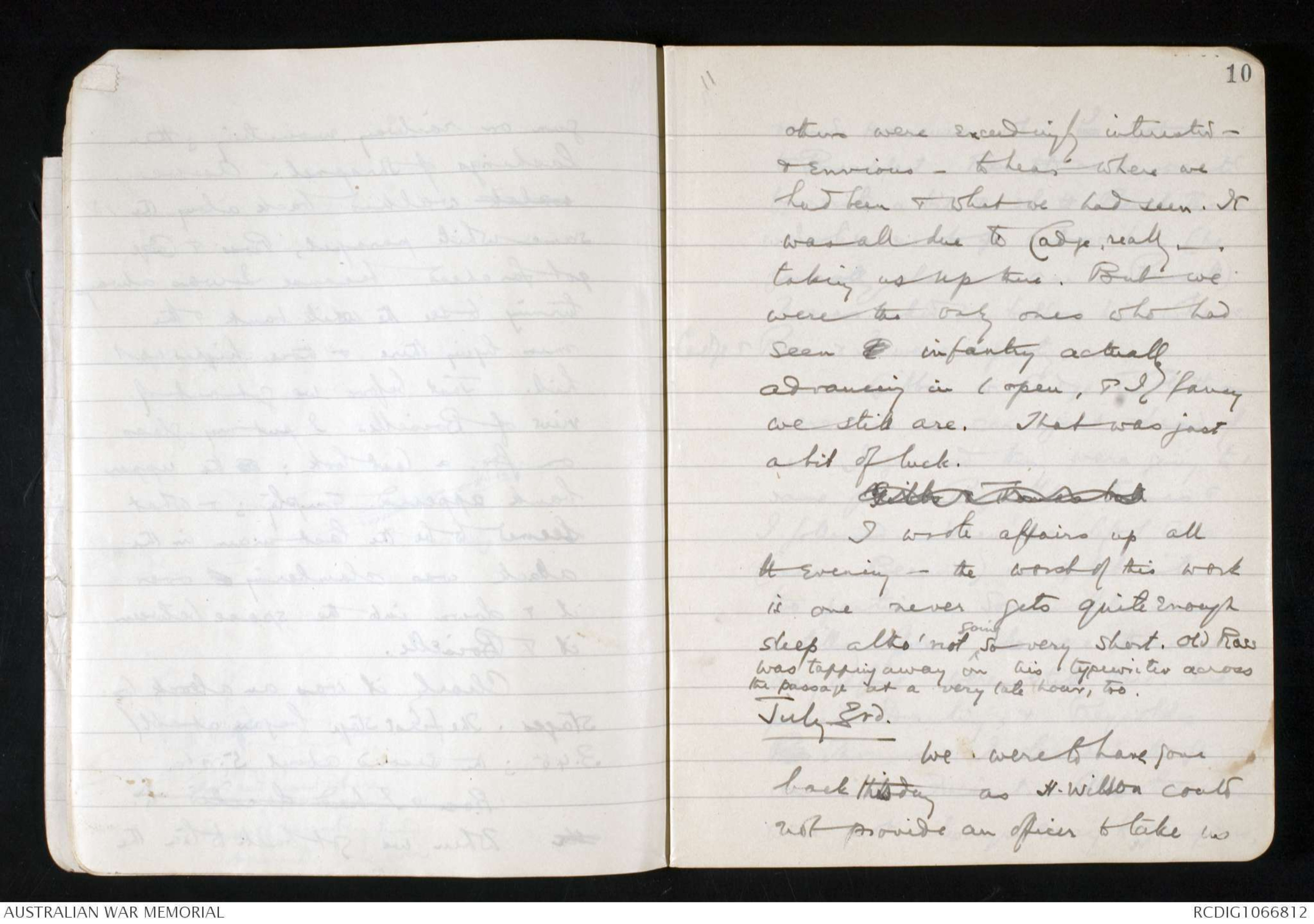
AWM38
Official History,
1914–18 War: Record of C E W Bean,
Official Historian.
Diaries and Notebooks
Item number: 3DRL606/49/1
Title: Diary 1916
Describes German trenches and the fighting of
early July, discusses Bean's military status and
mentions Vignacourt and Sir Brudenell White's
predictions.
AWM38-3DRL606/49/1
July 2 - 18
didn't know
49
D10
Original. DIARY NO. 49.
AWM38 3 DRL 606 ITEM 49 [1]
DIARIES AND NOTES OF C. E. W. BEAN
CONCERNING THE WAR OF 1914 - 1918
THE use of these diaries and notes is subject to conditions laid down in the terms
of gift to the Australian War Memorial. But, apart from those terms, I wish the
following circumstances and considerations to be brought to the notice of every reader and writer who may use them.
These writings represent only what at the moment of making them I believed to be
true. The diaries were jotted down almost daily with the object of recording what
was then in the writer's mind. Often he wrote them when very tired and half asleep;
also, not infrequently, what he believed to be true was not so - but it does not
follow that he always discovered this, or remembered to correct the mistakes when
discovered. Indeed, he could not not always remember that he had written them.
These records should, therefore, be used with great caution, as relating only what
their author, at the time of writing, believed. Further, he cannot, of course, vouch
for the accuracy of statements made to him by others and here recorded. But he
did try to ensure such accuracy by consulting, as far as possible, those who had
seen or otherwise taken part in the events. The constant falsity of second-hand
evidence (on which a large proportion of war stories are founded) was impressed
upon him by the second or third day of the Gallipoli campaign, notwithstanding that
those who passed on such stories usually themselves believed them to be true. All
second-hand evidence herein should be read with this in mind
16 Sept., 1946 C. E. W. BEAN
AUSTRALIAN WAR MEMORIAL
ACCESS STATUS
OPEN
11
1
July 2 - 18
(to be made) … The German didn’t know
where to shoot yesterday - but today
he does & he will, more & more as
we go on. He knows exactly where we
are attacking & he is putting up a
frightful barrage there -“
As minutes I thought our men surely
could not get through it. Of course the
attack must have been beaten
back - the head of it hammered
it in. The German artillery was pouring
all its stuff all down tt narrow valley.
Shrapnel - 4.2 I shd say, for
it seemed bigger & angrier than
ours, with its black cloud in
place of our white - was beating
up the chalky dust o / valley or
the powdered brick coloured tawny
dust o / surface earth - & there
seemed to be field guns in it too -
2
Hand drawn diagram – see original
(x i.e. the German
m-g corps)
11
3
The dust thrown up streamed slowly
back up / valley (beyond / nearer
shoulder but in front of Boiselles)
until Boiselle ws hidden from us by a
black mist thicker as dense as a
London fog.
Then - from ^somewhere behind that fog - I heard
a ^German machine gun barking. So our infantry must
be coming - somewhere.
So The Germans had ^evidently survived our
bombardment - somewhere, in some
cellar or deep dugout in tt place, they
must have lived through all tt volcanic
eruption of brick dust & chalk; & when it
moved on lengthened they must have come out
noticed this (they wd be waiting for it) &
clambered out of their dugout & got their
gun on / parapet - & here it was,
barking away still. By Jove, it’s a fine
Corps, thatx.
Clearly One knew tt our infantry must be
11
3
coming, because tt m.g. ws clearly
firing at them.
And presently they came. In the
nearer shoulder of the hill in front
of Boiselle, there was a dip as if
some road passed over it, or perhaps
an ^old trench now powdered by shells.
Hand drawn diagram – see original
It seemed to
disappear again
behind a chalky
bank (all the
trench parapets are pure chalk
here. Presently, up over / shoulder
of the hill at this point appeared
/ heads of men men running
up into / face o / German shell
fire - first their heads, then their bodies
- heads tucked down as if running into
a hailstorm, as I saw our men go into
their charge at Helles. Where The bank
gave them some slight shelter - more
apparent than real. They rested for
a minute or two at R (in sketch); & then
11
ran on again. There were
perhaps 12 or 15 in the first batch.
xxxxxxxxxxx They panted over
the hills edge & flung themselves down
or knelt. They would have made
a fine target for a big shell & every
minute I was expecting to see a
5.9 burst fair in amongst them, (as
the destroyers shell did fair in amongst
our Light Horse at Anzac on June 28) -
for shells were bursting on / further side o /
bank, quite close to them. Heavy rolling
black clouds wd rise shoot into existence -
then some burst in / white chalk still
nearer (I saw a man or two running
up outlined agst those x dirty whitish
bursts) - shrapnel & fragments
tore tore up smaller close spurts
from / earth in front of this black
background - but no shell actually
11
pitched on these men, nor behind
them. Fortunately / German is very
accurate - & if he is not shooting at
you ^you but at some point a very slight distance away he generally doesn’t hit you.
After abt two minutes the
first batch most of them had jumped up
& run on. But they never all went.
There were always some left lying on /
white bank. It ws hard to say how
many of these had been killed or wounded -
some certainly had, three or four. I saw
one man ^in a batch get up to run and hide lie down
again after a few steps. Possibly he was
hit, I don’t know. There were about
9 or 12 of them still lying down there next
day when I looked at / same place.
For about 3 quarters of an
hour fresh batches were coming up.
The German barrage still continued,
not perhaps quite so fiercely; the our
11
people seemed to be building up
a firing line at the back of another
bank a little further up / hill -
it ws We saw no sign of them in La
Boiselle. I thought at one time I
saw ^one or two men moving across the green
grass between this second bank & the
Boiselle ruins. It may have been
- or they may have bn Germans - or
imagination.
We had to go leave in order to be
back to Amiens in decent time.
I should have liked to stay longer - but
Cadge was good to have let us stay
so long. As we moved off our
infa artillery was repeating on
Boiselle the same bombardment I
had seen earlier : first heavy
explosions in the ruins - I fancied
they were from our friend the 12 in
8
Hand drawn diagram – see original
11
9
gun on railway mounting, then
lashings of shrapnel. As we
walek walked back along the
same white parapet, Ross & Cadge
got far ahead because I was always
turning to see the white bank & the
men lying there & those higher up /
hill. Just before we got out of
view of Boiselles I put my glass
on for a last look : on the upper
bank appeared empty; & what
seemed to be the last man in the
attack was clambering at over
it & down into the space between
it & Boiselle.
Clearly it was an attack by
stages. The first stage began at abt
3:45; the second about 5. o’c.
Ross and I had decided to
sta When we got back to tea the
11
10
others were exceedingly interested -
& envious - to hear where we
had been & what we had seen. It
was all due to Cadge really -
taking us up there. But we
were the only ones who had
seen t infantry actually
advancing in / open, & I fancy
we still are. That was just
a bit of luck.
Gibbs & Thomas had
I wrote affairs up all
tt evening - the worst of this work
is one never gets quite enough
sleep altho’ not ^going so very short. Old Ross
was tapping away on his typewriter across
the passage at a very late hour, too.
July 3rd.
We were to have gone
back this day as H. Wilson could
not provide an officer to take us
 Deb Parkinson
Deb ParkinsonThis transcription item is now locked to you for editing. To release the lock either Save your changes or Cancel.
This lock will be automatically released after 60 minutes of inactivity.